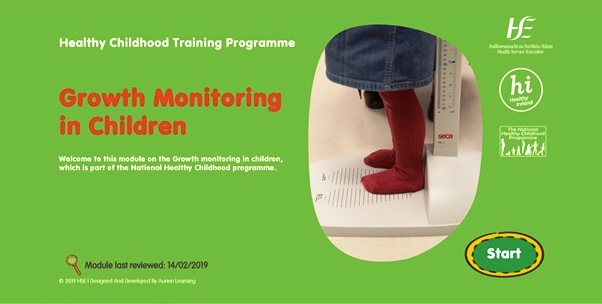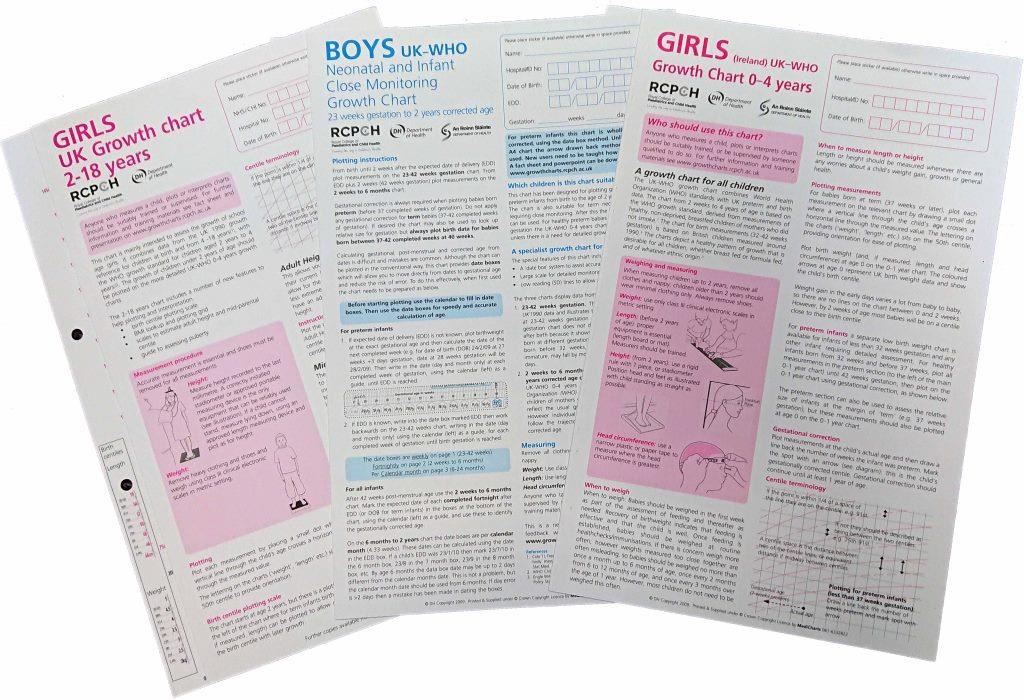Why monitor a child’s growth?
A child’s growth is one of the most sensitive indicators of their health. Poor health or poor nutrition in children almost always affect growth. For this reason, growth assessment is an essential part of child health programmes.
Monitoring growth allows for the objective detection of growth disorders, at population level, at the earliest opportunity. This facilitates early identification and treatment to improve long-term outcomes and to identify under- or over- nutrition.
Growth measurements encompass the measurement of length/height, weight and head circumference.
- Length for age - whether an infant is an appropriate length for their age
- Weight for age - whether an infant is an appropriate weight for their age
- Weight for length - whether the weight and length of an infant are in proportion
- Head circumference for age - information about brain development
Information for parents on growth monitoring
Parents may have queries about growth monitoring and growth measurements.
Read more about how your child's growth is measured
The UK-WHO Growth Charts
In 2006 the World Health Organisation (WHO), after a 15 year process of planning, data collection and analysis, developed new Child Growth Standards and recording charts. The reason for this development was that differences were being noted between the weights of breastfed babies versus formula fed babies. The new charts were based on the growth of breastfed babies and endeavoured to normalise breastfeeding as the optimal feeding method.
The UK introduced the new WHO growth charts in 2009, based on the recommendation of the Scientific Advisory Committee on Nutrition and the design of new charts by the Royal College of Paediatrics and Child Health (UK-WHO charts).
In October 2010, in Ireland, a national policy decision was made by the (then) Department of Health and Children to adopt the UK-WHO growth charts and integrate them into child health services in Ireland.
The UK WHO Growth Charts were adapted for Ireland and were launched by the HSE in January 2013. Training materials were developed and growth charts were made available to all child health service providers in the community and acute setting. An updated online training programme was developed by the National Healthy Childhood Programme and is available to all HSE staff through HSELanD. Further details are provided below.
The UK-WHO growth charts were constructed using data on healthy breastfed children from around the world who had no known health or environmental constraints to growth. These charts set breastfeeding as the norm against which all other feeding methods are compared. They should be used for all children however they are fed.
All health professionals who use growth charts should receive some training
 The National Healthy Childhood Programme recommends a minimum of 1 hour's training in growth monitoring for users of the growth charts.
The National Healthy Childhood Programme recommends a minimum of 1 hour's training in growth monitoring for users of the growth charts.
An interactive eLearning module on Growth Monitoring is available at https://www.hseland.ie/dash/Account/Login as part of the suite of training developed by the National Healthy Childhood Programme.
This module on Growth Monitoring was developed by a multidisciplinary team with experience in the area of growth monitoring.
The module includes:
- practical demonstrations about using the growth charts
- video demonstrations regarding the correct way to obtain measurements
- length/height
- weight
- head circumference

UK- WHO growth charts
The UK-WHO growth charts include a suite of four 9-centile growth charts for children in Ireland. Different versions of each chart were created for both boys (blue charts) and girls (pink charts) to reflect the different rates at which they grow.
The 4 growth charts include:
- The 0-4 Years chart – for use from birth (from 32 weeks gestation) to 4 years of age
- The 2-18 years chart – can be used for children from 2 years onward
- The NICM (Neonatal and Infant Close Monitoring) chart – used to monitor the growth of very preterm infants or those with significant health problems
- The chart for children with Down’s syndrome – used for (full term) infants and children with Down’s syndrome from birth up to 18 years of age
Each chart includes detailed instructions to help the user plot effectively.
Ordering the UK-WHO Growth Charts
The UK-WHO (Ireland) 0-4 years chart is included as standard in the National Child Health Record used by public health nurses.
In addition, the UK-WHO- growth charts are available for ordering by HSE staff from the HSE National Distribution Centre (NDC) through current local ordering arrangements or can be ordered directly from Medicharts (www.medicharts.ie)
The UK-WHO chart for children with Down’s Syndrome chart is not available to order via the NDC and can be ordered via Harlow Printing (https://www.healthforallchildren.com/product-category/shop/growth-charts/)
For more information contact Paul Marsden, Project Manager Child Health Screening Programmes, Department of Public Health, HSE Area Office, Arden Road, Tullamore, Co. Offaly or by email: paul.marsden@hse.ie
To view the UK-WHO growth charts
The charts are available to download at the following links. This may be useful for those who wish to view the charts for teaching or learning purposes. However, we would advise using a hard copy of the charts rather than a downloaded version for inclusion in a child health record. In the case of the 0-4 years chart, this will be available in the National Child Health Record.
The charts can be freely downloaded under the following terms and conditions:
- The charts must not be used for the purposes of advertising or promoting other products
- RCPCH/WHO/Department of Health must be acknowledged as chart developers in any publications or products
- Charts are copyright © 2009 Department of Health, this copyright notice should be reproduced on all copies
- Users may not claim any intellectual property rights over the materials or seek to restrict use of them by others
- Anyone wishing to print the charts for commercial reasons should first obtain permission from the Department of Health (UK), and contact MB Crown copyright
- Any version printed for sale must adhere to the printing specification
- Chart images must be reproduced in whole without cropping or altering in any way